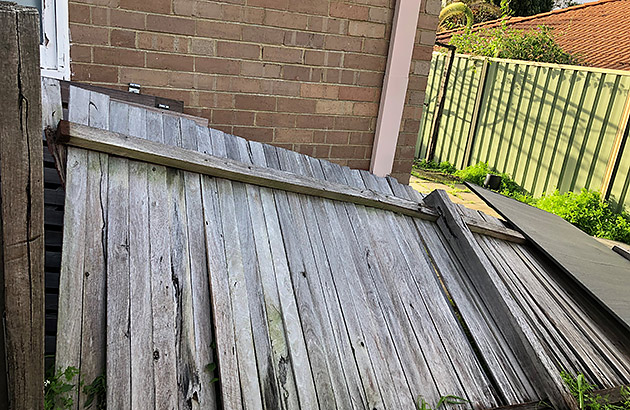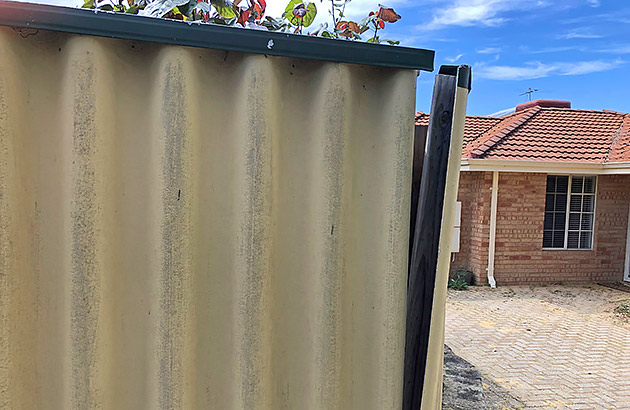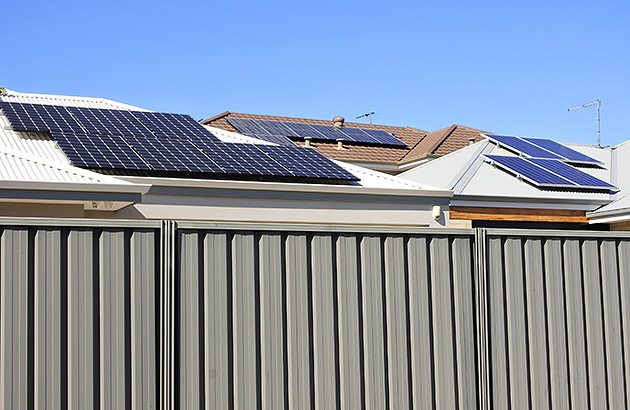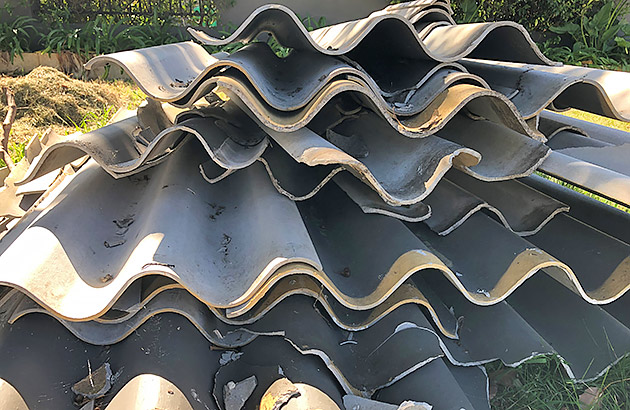By far the most common damage done during a storm is to fences. In 2021, 35 per cent of total storm insurance claim costs to RAC were for fence replacements. So if your fence takes a tumble during a storm, rest assured you’re not alone.
Sometimes a claim for storm damage to a fence can involve a fence that’s shared with a neighbour. This can make the process a little different from other insurance claims, so before you make a claim, here are some things you’ll need to know.
RELATED:
Preparing your home before a storm hits »
Shared fences
A shared fence separates your property from your neighbour’s, and is owned by both of you. Naturally, if you make a claim, we cover the costs for your share of the fence but your neighbour is responsible for their portion, so they need to take care of funding the repairs for their share.
The nature of shared fences makes the process different for these claims. For shared fences, we’ll give you a cash settlement so you can then organise your own repairs with your neighbour.

Get ready to fix your fence
Before you make a claim, measure the length of damaged fence rounded up to the nearest metre so you’ve got that information ready. You only need to measure the damaged part, not the whole fence, and you don’t need to know the height.
You may also need to tell us if the fence is painted on your side and how many metres are painted. We cover you for painting on your side but not your neighbour’s because they’re responsible for painting and repairing their side of the fence.
You don’t normally need to send photos of your damaged fence, but you do need to tell us the date the damage occurred.
At some stage, you’ll need to talk to your neighbour because you’ll be managing repairs of the fence together. If you have a difficult neighbour, you might wish to speak to them sooner rather than later so you can get that fence repaired quickly. Your local council may be able to help if there’s a dispute.

Types of fences
When you claim, we’ll ask you what type of fence you have. Colorbond fencing is very popular in Western Australia because it’s low maintenance and made from steel. HardieFence is corrugated, fibre cement fencing that’s also popular and looks very similar to Super Six fencing, but there are differences. HardieFence has five ridges, compared to Super Six which has six. If there are no visible fixings, the fence is probably HardieFence, whereas Super Six fences are usually secured with washers and bolts at the top and bottom.
There are other types of fences. If your fence was built before the 1980s, it may be asbestos. Or you may have a brick or wooden fence, or your fence may be built from more than one type of material. You might not be sure what type of material your fence is made from, and that’s fine too. You can tell us if you’re not sure. Whether you claim over the phone or online, we’ll guide you through the process.
In some instances, we might not be able to match your new fence with your original one, for example, if your original fence was made of a material that’s no longer available such as asbestos. The cash settlement will cover the cost of replacing the damaged section of fence in Colorbond, keeping in mind that any undamaged portions are not covered. You may not want a single fence line made from two different materials, so this might be a chance to upgrade your entire fence and use the cash settlement to contribute towards the cost.

How we work out the cost of your fence repairs
We have calculations we use for some fence types that help us work out the cost of repairing your fence. For example, if your fence is Colorbond, we know how much the repairs will cost per metre and we use this information to estimate the repair cost. This figure covers all costs including materials, labour and painting (where applicable). We’ll offer you a cash settlement that covers your share of the fence (50 per cent), less your excess.
You don’t have to accept the cash settlement immediately. You can get a repair quote first and send it to us if you’re more comfortable doing this. Also, you might be concerned at what happens if you accept the cash settlement, only to find the repairs don’t cover your costs. If this is the case, you can send us your quote and we'll review the amount and contact you to discuss your options.
There are also instances where fence repairs are so complex that we can’t provide an accurate calculation, for example, you may have a brick and picket fence. If this is the case, you’ll need to organise a repair quote and send it to us for review. Once we’ve reviewed the quote, we’ll contact you to discuss your options.
Your safety and security
Sometimes fence damage can create a safety issue, for example, if you have a pool, spa or pond that’s exposed or if your property is accessible to the public (say, if it backs onto an open street, lane way or council land). If there’s a serious safety issue, in most cases we’ll cover a temporary fence for up to 12 weeks to help ensure your property is safe.

The process for shared fence claims
In summary, the process is that you:
- Make a claim.
- Talk to your neighbour. They’re responsible for their share of the fence repair costs.
- Get a quote from a fence repairer.
- Pay for your share of the fence repair with your cash settlement.
If you need to claim...
Our local claims team is on the ground and ready to help, seven days a week.
Disclaimer: Issued by RAC Insurance Pty Limited. Check the PDS & TMD at rac.com.au.
